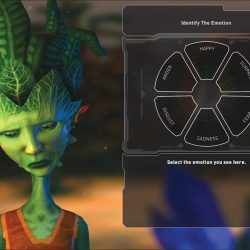3 Kinds of Smiles
The smile may be the most common and flexible expression, used to reveal some emotions and cover others. But how do we know what a smile means? UW psychology professor Paula Niedenthal ’81 studied smiles and found that they fall into three broad categories, each of which uses the facial muscles differently to communicate different things.
Reward Smile
“Probably the most intuitive,” Niedenthal says, this is “the kind of smile you would use with a baby, so he will smile back or do things you like.” It’s a symmetrical hoist of facial muscles plus a dash of eyebrow lift and some sharp lip pulling.
Affiliative Smile
Used to communicate tolerance, acknowledgment, or a bond, this smile shows that you’re not a threat — it comes with a similar symmetrical upturn to the mouth, but spread wider and thinner with pressed lips and no exposed teeth.
Dominance Smile
Used to signify status and manage social hierarchies, this smile dispenses with symmetry, pairing a bit of lopsided sneer with the raised brows and lifted cheeks typically associated with expressing enjoyment.
Published in the Winter 2017 issue






Comments
No comments posted yet.